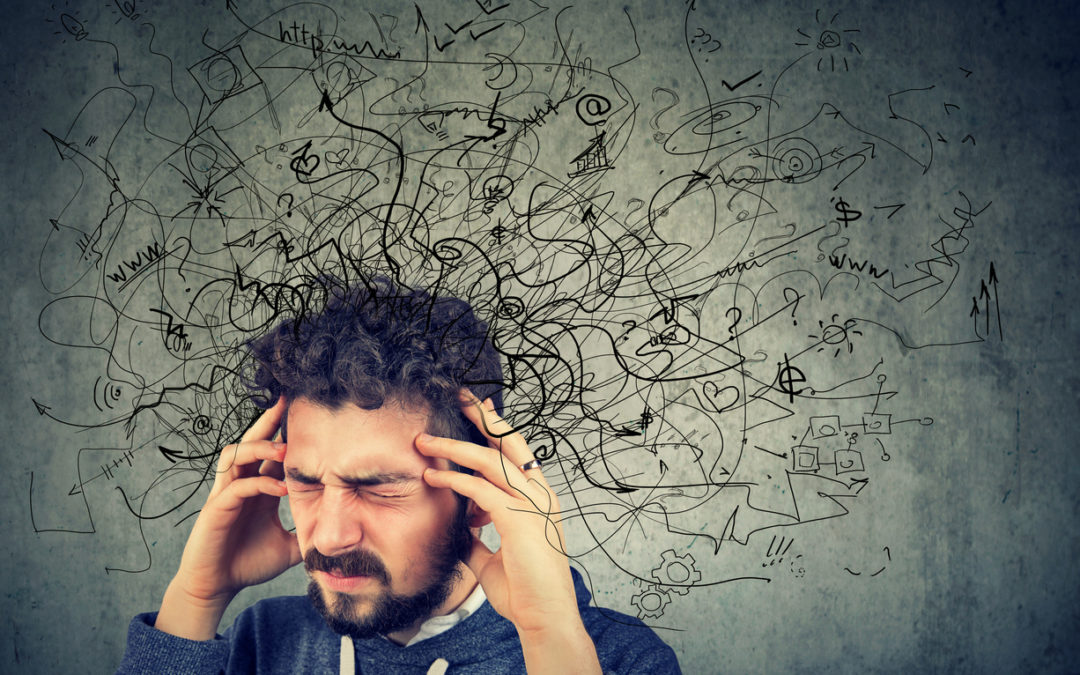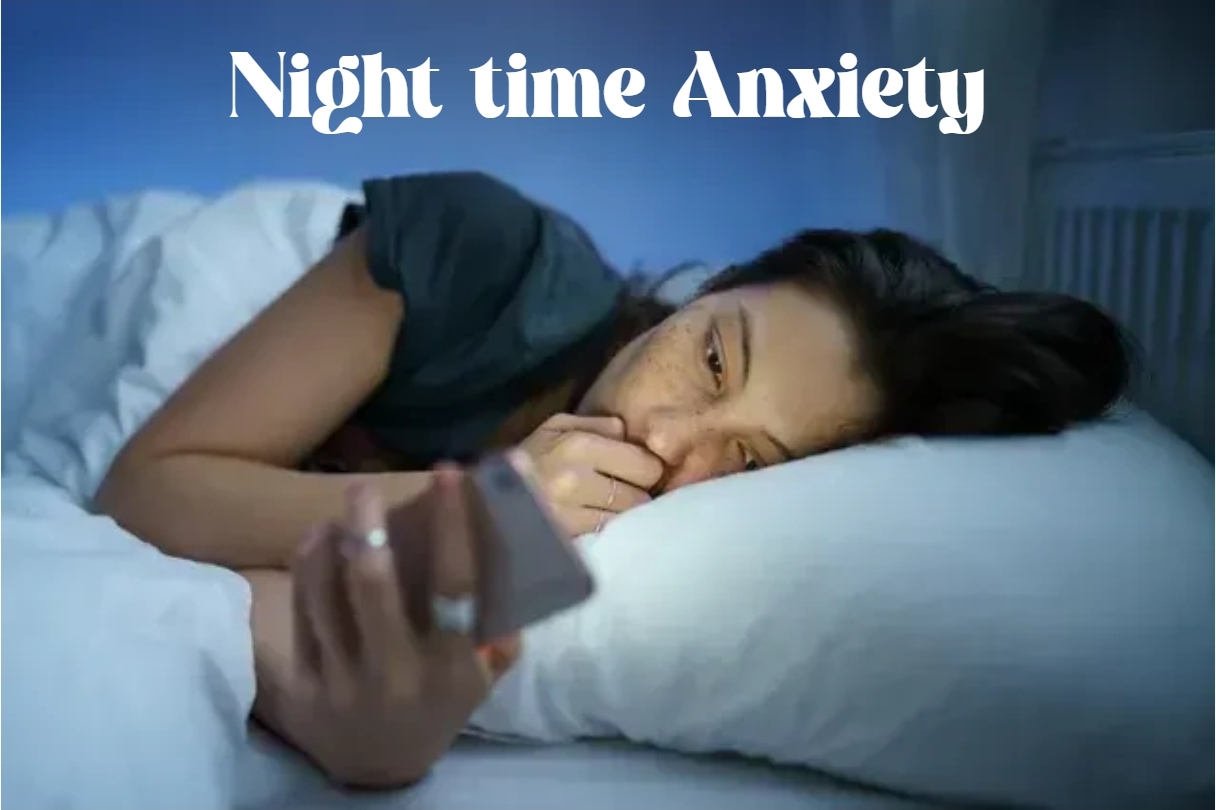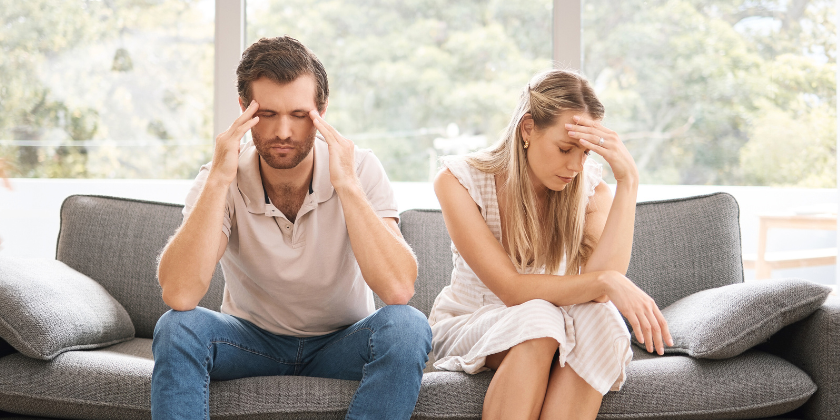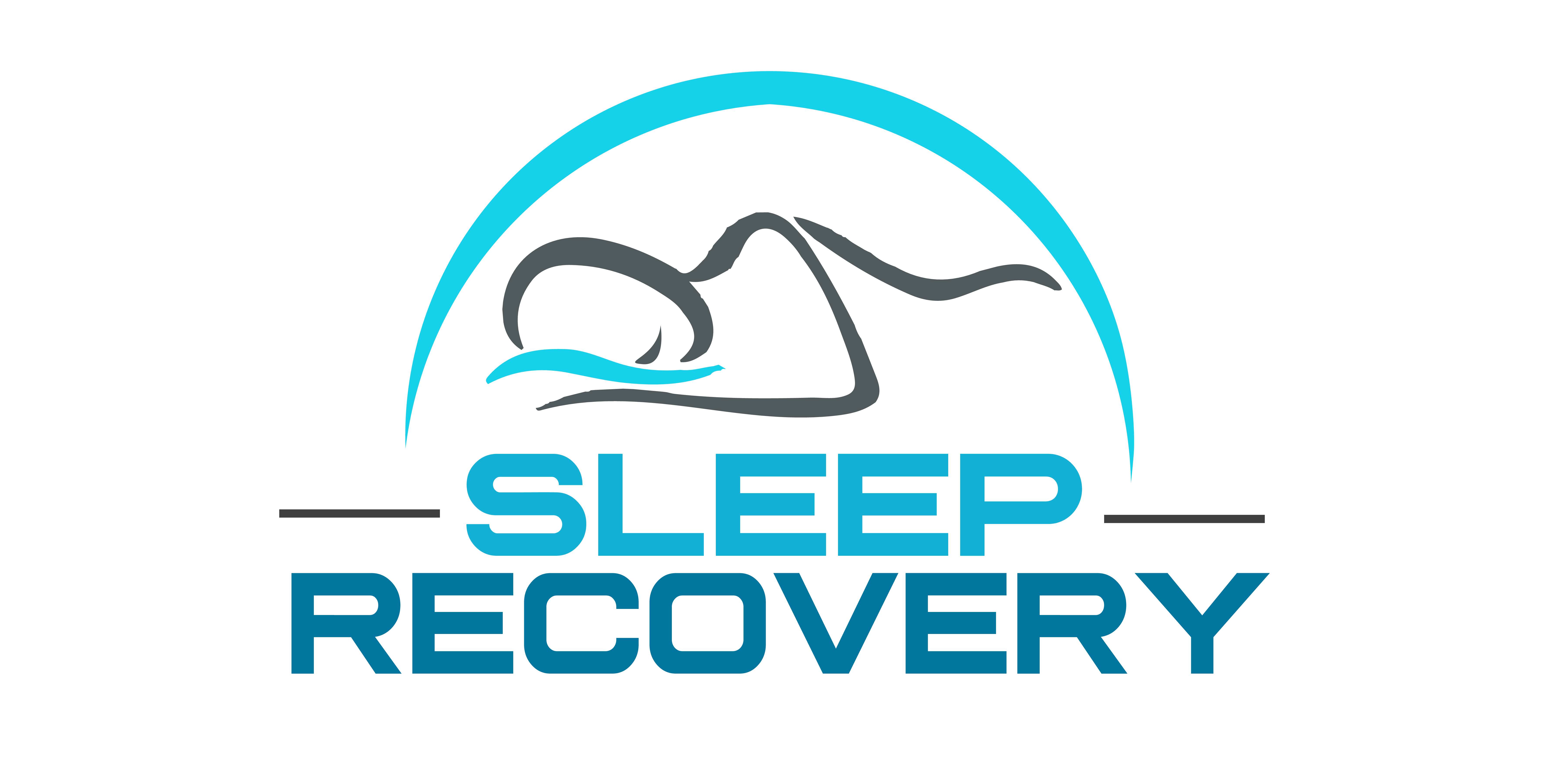The Anxiety-Insomnia Loop: How Each Condition Feeds the Other

Breaking Free Without Dependency on Medications
The Vicious Cycle That Traps Millions
Adrian first noticed the pattern during her sophomore year of college. Stress about upcoming exams kept her awake at night, which made her more anxious the next day, making sleep even more elusive. What started as occasional restless nights evolved into chronic insomnia, which then morphed into a constant state of anxiety about not sleeping.
“I became afraid of my bed,” she recalls. “The more I worried about not sleeping, the more my anxiety spiked, and the less I could sleep. It felt like being trapped in a nightmare while wide awake.”
Sarah’s experience represents a widespread phenomenon that sleep specialists increasingly recognize: anxiety and insomnia exist in a self-perpetuating loop where each condition strengthens the other. Understanding this treacherous cycle is the first step toward breaking free from it.
The Neurobiological Connection
The link between anxiety and sleep isn’t merely psychological – it’s deeply rooted in brain chemistry and neural pathways. Both conditions involve dysregulation of the same neurotransmitter systems, particularly GABA (the brain’s calming chemical) and the stress hormone cortisol.
When anxiety levels rise, the brain’s alarm system, centered in the amygdala, becomes hypervigilant. This heightened state directly opposes the brain’s natural sleep preparation process, which requires a gradual calming of neural activity. Dr. Jeffery Wilson explains: “An anxious brain is essentially a brain that can’t turn off its danger detection system. Sleep becomes impossible when your brain thinks it needs to stay alert for threats.”
Research confirms this connection. Studies tracking people with anxiety disorders show they spend significantly more time in lighter sleep stages and experience more frequent awakenings. Their brains never fully transition into the deep, restorative phases necessary for emotional and physical recovery.

How Sleep Loss Amplifies Anxiety
Sleep deprivation doesn’t just result from anxiety – it actively creates and worsens ruminative anxious states. When we don’t get adequate rest, several physiological changes occur that prime the brain for anxiety:
The prefrontal cortex, the brain region responsible for rational thinking and emotional regulation, becomes impaired. Meanwhile, the amygdala becomes hyperactive, responding more intensely to potential stressors. This neurological imbalance explains why everything feels more overwhelming when we’re tired.
Jerome Higman experienced this amplification effect dramatically. “Before reaching out, I suffered from severe anxiety, depression, and OCD. My sleep was bad as I usually wake up around 3-4 times a night.” The broken sleep created a state where his anxiety symptoms became unmanageable.
Current research published in the Journal of Anxiety Disorders found that just one night of poor sleep can increase anxiety symptoms by up to 30% the following day. Chronic sleep deprivation creates a state of chronic anxiety that becomes self-sustaining.
The Catastrophic Thinking Trap
One of the most insidious aspects of the anxiety-insomnia loop is how it distorts thinking patterns. People begin to catastrophize about sleep, creating anxiety specifically about not sleeping. This “performance anxiety” around sleep makes the very act of trying to rest a source of stress.
Common catastrophic thoughts include:
- “If I don’t sleep tonight, I’ll be useless tomorrow.”
- “I’ll never be able to function without enough sleep.”
- “My insomnia will ruin my relationships/career/health.”
- “I’m broken and will never sleep normally again.”
These thoughts trigger the body’s stress response, flooding the system with cortisol and adrenaline – chemicals that are directly opposed to sleep. D. Vail describes this experience: “I had been struggling with chronic anxiety most of my life. When I talked to David, he explained to me that insomnia and anxiety work against each other and can make anxiety way worse.”
Physical Manifestations of the Loop
The anxiety-insomnia cycle doesn’t remain confined to the mind – it manifests in numerous physical symptoms that further disrupt sleep and increase anxiety:
Heart palpitations, muscle tension, digestive issues, and temperature dysregulation all interfere with the body’s transition into sleep. These physical symptoms then become additional sources of anxiety, creating yet another layer to the self-perpetuating cycle.
Jeremy Williams described his experience with these physical manifestations: “I had heart palpitations, lying on my back, muscle spasms in random areas all over my body, I lost 20lbs, my appetite left. For two months, I slept 2 hours that didn’t feel like sleep or not at all.”
Traditional Treatments: Addressing Symptoms, Not Causes
Conventional medicine typically treats anxiety and insomnia as separate conditions, prescribing anti-anxiety medications and sleep aids without addressing their interconnection. While these medications may provide temporary relief, they often create new problems.
Sleep medications can increase anxiety during daytime hours as they wear off. Anti-anxiety medications frequently disrupt natural sleep architecture, preventing the deep sleep stages necessary for emotional processing and stress recovery. This approach often leaves people dependent on multiple medications while the underlying cycle continues.
Vandana Krishnan experienced this limitation with traditional treatments. She struggled with anxiety and mood swings that kept her awake at night, creating a cycle where “a lot of thoughts used to keep me awake at night, and I would wake up every morning feeling anxious and nervous.”

The Neurofeedback Solution: Addressing Both Conditions Simultaneously
Sleep Recovery’s approach recognizes that anxiety and insomnia share common neural pathways and must be addressed together. Neurofeedback training targets the brain’s electrical patterns that underlie both conditions, helping restore natural regulation without medication dependency.
The process works by showing the brain its activity in real-time, allowing it to recognize and correct dysfunctional patterns. Unlike medications that chemically suppress symptoms, neurofeedback helps the brain relearn healthy patterns of activation and calming.
David Mayen explains: “Most people don’t realize that their brain can learn to be calm just as easily as it learned to be anxious. We’re not forcing change – we’re giving the brain information about itself and letting its natural intelligence make corrections.”
Breaking the Cycle: Real Client Transformations
The effectiveness of addressing anxiety and insomnia together becomes clear through client experiences. When both conditions improve simultaneously, the relief is often dramatic and long-lasting.
Alex Baylon’s review captures this comprehensive approach: “David was very open and knowledgeable about sleep issues. It’s important to address both anxiety and insomnia together, as they are almost always co-occurring conditions that tend to exacerbate one another.”
Yolanda Higman experienced rapid relief from both conditions: “Just finished four treatments and I am amazed how I feel – anxiety free… a new life I have. My sleep has improved, and I am off all medication.”
The speed of improvement often surprises clients. D. Vail noted: “The relief came in only three sessions. David is also very good at coaching anxiety-type personalities. He showed me how to use my awareness to see the traps anxiety sets for me.”
The Role of Awareness Training
Beyond the neurofeedback technology, Sleep Recovery incorporates anxiety awareness coaching that helps clients understand their patterns and develop new responses to anxious thoughts. This educational component is crucial for breaking the cognitive aspects of the anxiety-insomnia loop.
Clients learn to use their awareness better to recognize early signs of anxiety escalation and implement techniques to interrupt the cycle before it spirals. This awareness training creates lasting tools that extend far beyond the treatment period.
Amanda M. describes gaining this crucial skill: “Sleep Recovery truly helped me control my fight or flight anxious reactions! I’ve learned not to trust my anxiety, and I have become slower to react when I’m feeling anxious!”
Sleep Architecture and Emotional Processing
Healthy sleep involves specific stages crucial for emotional regulation and stress processing. REM sleep plays a vital role in emotional memory consolidation and anxiety reduction. When the anxiety-insomnia loop disrupts these stages, emotional regulation becomes increasingly tricky.
Neurofeedback training helps restore natural sleep architecture, allowing the brain to process and integrate daily stressors properly. This restoration creates a positive feedback loop: Better sleep reduces anxiety, which in turn improves sleep quality.
Jessica S. experienced this restoration: “Now I can count on getting regularly good, deep, and REM sleep. I feel better and have a lot more energy. David was also AMAZING to work with and so comforting and understanding.”

The Family System Impact
Anxiety and insomnia don’t exist in isolation – they affect entire family systems. Partners lose sleep, children pick up on parental stress, and household functioning suffers. Addressing both conditions together often improves family dynamics significantly.
Beth S. saw this positive ripple effect with her daughter: “My daughter used to take melatonin every night to sleep, and still had trouble. Now she falls asleep easily every night without melatonin. It has also helped her grades in high school.”
Long-Term Stability Without Medication
One of the most remarkable aspects of neurofeedback treatment for anxiety and insomnia is the long-term stability it creates. Unlike medications that must be continued indefinitely, the neural changes from neurofeedback tend to be permanent.
Understanding Treatment Resistance
Some new Sleep Recovery clients find their anxiety-insomnia cycle particularly resistant to intervention. Often, these cases involve underlying trauma or deeply ingrained neural patterns that require specialized approaches. Sleep Recovery’s team recognizes these complex cases and adapts treatment accordingly.
Caroline Conner’s situation illustrates this complexity: “My case was a bit more complicated. The combination of Amplitude Training, Light Therapy, and Alpha-Theta work has an immeasurable impact on my sleep quality.”
The Meditation Connection
Many clients discover that addressing their anxiety-insomnia loop opens them to previously inaccessible relaxation techniques. Meditation and mindfulness practices become possible when the brain isn’t trapped in constant hypervigilance.
Professional and Academic Performance
The anxiety-insomnia loop significantly impacts cognitive function, creativity, and performance. When both conditions improve together, people often experience dramatic improvements in their professional and academic lives.
Creating New Neural Pathways
The brain’s neuroplasticity allows for the creation of new neural pathways even after years of anxiety and insomnia. Neurofeedback training guides this neuroplastic change, helping establish patterns supporting calm states and natural sleep.
This program involves patience and consistency, but the results can be transformative. One client noted: “I truly believe I met David for a reason. His kindness, compassion, and expertise have profoundly impacted my life.”
The Progressive Nature of Recovery
Freedom from the anxiety-insomnia loop typically follows a familiar pattern. Early improvements in sleep often lead to reduced daytime anxiety, further improving sleep quality. This positive progression continues as the brain strengthens new patterns.
Beyond Symptom Management: Thriving
The goal isn’t merely to manage anxiety and insomnia – it’s to help people thrive. When the cycle breaks, many clients find they have energy and emotional capacity they haven’t experienced in years.
Hope for Those Still Trapped
For those currently caught in the anxiety-insomnia loop, understanding the connection between these conditions offers hope. The cycle that feels impossible to break can be interrupted with the right approach and support.
The key is recognizing that anxiety and insomnia aren’t separate problems requiring separate solutions – they’re interconnected aspects of the same underlying imbalance. When addressed together, both conditions can improve dramatically.
Recovery is possible, and for thousands of people, breaking free from the anxiety-insomnia loop has meant the difference between merely surviving each day and truly living each one to its fullest potential.
References:
- Unraveling the complex interplay between insomnia, anxiety, and brain networks. https://pmc.ncbi.nlm.nih.gov/articles/PMC10925950/
- The Association between Insomnia and Anxiety Symptoms in a Naturalistic Anxiety Treatment Setting. https://pmc.ncbi.nlm.nih.gov/articles/PMC7369215/
- The Relationship Between Anxiety and Insomnia. https://www.sleepfoundation.org/mental-health/anxiety-vs-insomnia
-
A comprehensive review of the psychological effects of brainwave entrainment. https://www.ncbi.nlm.nih.gov/books/NBK75019/
-
Effectiveness of brainwave entrainment in the alpha band on working memory, anti-saccade, and anxiety level of anxious participants. https://psycnet.apa.org/record/2024-57695-001
